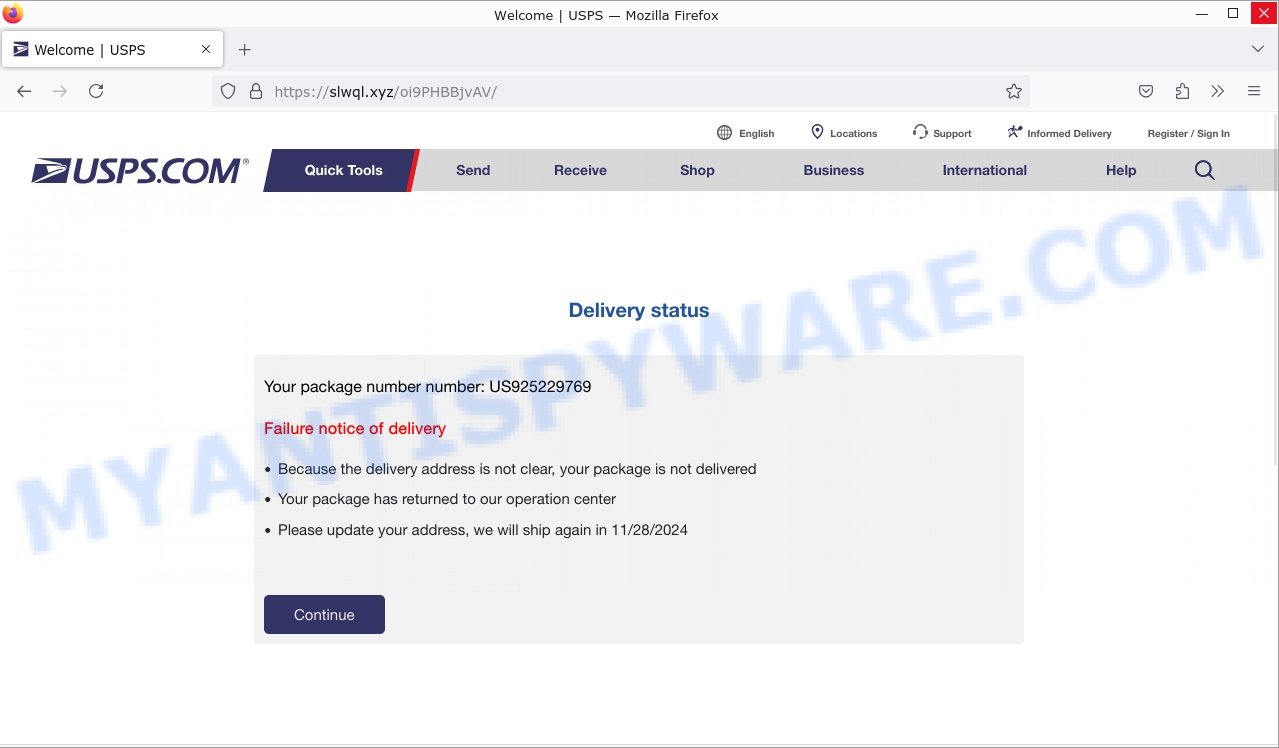Have you come across messages claiming that your USPS package cannot be delivered due to missing address information or an incorrect house number? They might tell you to click a link to update your address details, leading to something like hxxps://bit.ly/4hZZ1Mp or hxxps://cutt.ly/beGvXSJ1.
Question: Is this message from USPS asking you to confirm your address by clicking a link legit?
Investigation Findings: These messages are not genuine. They pretend to be from USPS but actually lead you to fake websites that look like the official USPS site, urging you to enter your personal and address information. Scammers are behind these sites to steal your data.
Answer: This is a fraudulent scam. 💡 To protect yourself from scams like this, never click on links in unexpected messages asking for personal information. Always use the official USPS website to check package status or contact customer service directly. Also, be cautious of URLs that use link shorteners like bit.ly or cutt.ly—they are often used in scams.
USPS Failure Notice of Delivery Text Scam overview
The USPS Failure Notice of Delivery Text Scam is a fraudulent scheme. Scammers send texts claiming your package cannot be delivered due to incorrect address information. The scam messages might say your package is on hold because they don’t have your full address. To stop it from being sent back, they ask you to update your address through a link they provide. The link leads to a fake USPS website that looks real, with the logo and design.

It’s important to know that this website is fake and not connected to USPS or any real company. The fake site asks for your personal information. Scammers can misuse this info in many ways, like stealing your identity.
Typical “USPS Failure Notice of Delivery” scam text messages may look like below:
Example 1:
[Mail Notice]: Your package has been
detained at our facility because your address lacks a house number. It is temporarily unavailable for delivery. To avoid being returned, you must confirm the address details within 24 hours:
hxxps://bit.ly/4hZZ1Mp
Wish you a wonderful day filled with joy and good weather!
Example 2:
USPS Notification: Unfortunately, we cannot proceed with the delivery of your package because of missing address information. To prevent a return, please update your details at the link: hxxps://cutt.ly/beGvXSJ1
Once the information is updated, your package will be dispatched shortly. Wishing you a wonderful day filled with joy and positivity!
Example 3:
[Mail Notice]: We are unable to deliver your shipment due to an incorrect house number in the address information. The delivery failed and the package was put on hold. To avoid returns, please be sure to reconfirm your complete address details hxxps://bit.ly/3CHJNvn within 24 hours. Thank you for your understanding!
📱 What to Do When You Receive the “USPS Failure Notice of Delivery” Scam Text Message
We advise everyone who receives this message to follow these simple steps to protect themselves from potential scams:
- ❌ Do not believe this message.
- 🔒 NEVER share your personal information or passwords via text.
- 🚫 Do not click on any links in suspicious messages.
- 🔍 Verify any phone numbers or links by checking the official website or contacting customer support directly.
- 📣 Report the scam text to your carrier by forwarding it to 7726 (SPAM).
If you accidentally clicked on a link in the “USPS Failure Notice of Delivery” text, suspect that your device may be compromised, or just want to check for threats, use one of the free malware removal tools. Additionally, consider taking the following steps:
- 🔑 Change your passwords: Update passwords for your email, banking, and other important accounts.
- 🛡️ Enable two-factor authentication (2FA): Add an extra layer of security to your accounts.
- 📞 Contact your financial institutions: Inform them of any suspicious activity.
- 🔄 Monitor your accounts: Keep an eye on your bank statements and credit reports for any unusual activity.
🔍 How to Spot a Scam Text Message
Scam messages often share common characteristics. By learning these signs, you can detect and avoid text scams:

💡 Here Are Some Ways to Recognize a Scam Text
- 📞 Unknown or Suspicious Numbers: Scam texts often come from unknown or very generic numbers, not official customer service numbers.
- 🔠 Misspelled Brand Names: Look carefully for any misspellings in the brand or company names, as scammers often try to mimic real companies.
- 👋 Generic Greetings: Messages starting with vague greetings like “Dear Customer” may not be from trusted companies.
- 🔗 Suspicious Links: Do not click on any links in suspicious messages. Instead, visit the company’s official website directly.
- ⏰ Sense of Urgency: Messages that demand immediate action or else a penalty will apply are often scams.
- 📝 Spelling and Grammar Errors: Scam texts may contain spelling mistakes or grammatical errors. Legitimate companies usually ensure proper language use.
- 🔒 Requests for Sensitive Information: Trustworthy organizations do not ask for passwords, credit card numbers, or Social Security numbers through text.
✅ Conclusion
We hope this article has helped you understand more about the “USPS Failure Notice of Delivery” Scam Text Message and how to protect yourself from scammers. If you receive a suspicious message similar to the example above, please share it in the comments section of this article to help warn others. Stay safe and vigilant! 🛡️
















